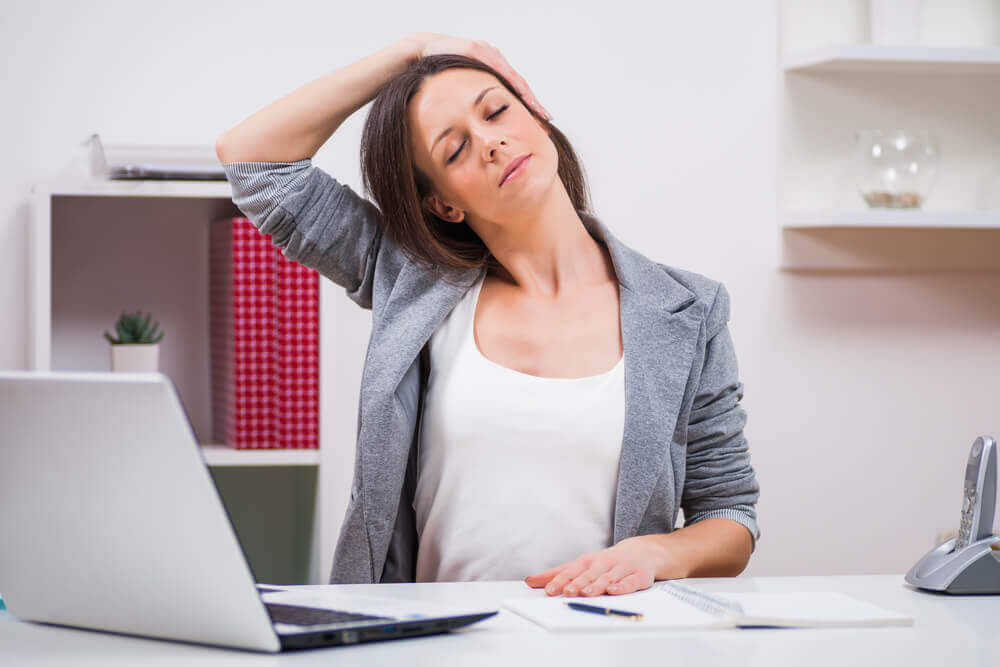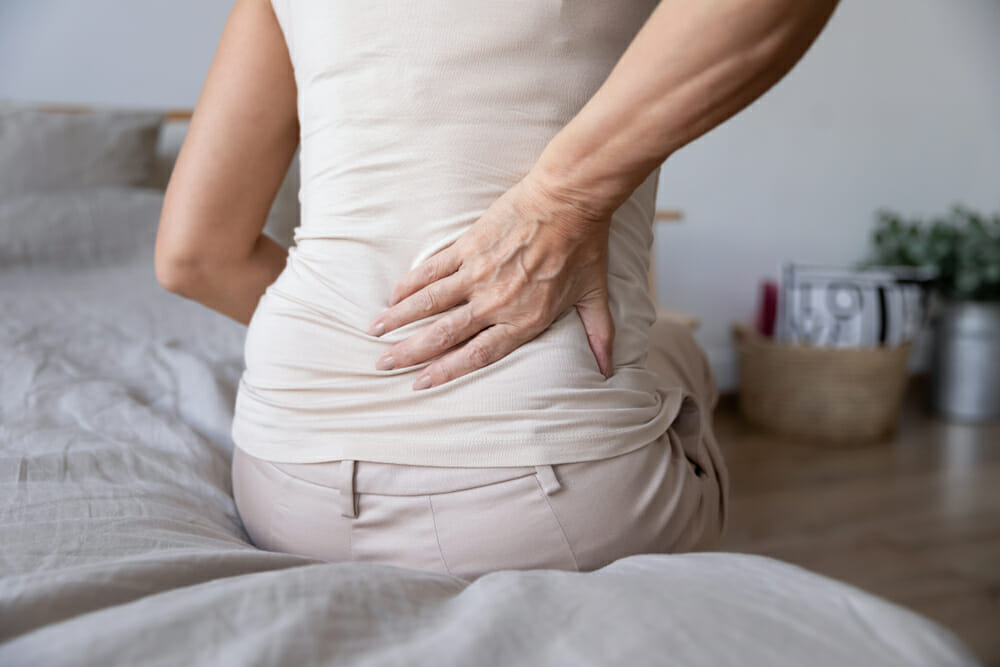
If your upper back is feeling a little sore and stiff, then give these simple exercises a try. All you need is a broomstick and a wall.
Banking, shopping, and socialising. Just some of the things we used to have to leave the house for and actually do. These days all this can be done from our phone or laptop – you don’t even need to stand up. Unfortunately, while you may be thanking technology for making your life easier, this can have a negative impact on your health. Poor endurance in your postural muscles as a result of long hours hunched over screens or at a desk is one of the main causes of upper back pain.
3 Simple Stretches For Upper Back Pain
Follow these three simple exercises that can easily be done at home or in the office. All you need is a broomstick and a wall. (Just unscrew the end of your broom or drop into Bunnings and grab one for a few bucks).
1. ‘Side To Side’
- Place the broomstick behind your head and shoulders and place your hands on the ends.
- Begin rotations from side to side (it helps to find a bit of space so you’re not bumping into furniture).
- Allow a little bounce at each end, for a variation bend forward slightly but keep your back straight. Continue with rotations and repeat 10 -15 times.
- If you feel comfortable – build up momentum to stretch out further.
- If you’re not sure how to perform this safely, seek help.
2. ‘Side Bend’
- Keeping the broomstick in the same place – gently bend from one side to the other. Take care to breathe out as you go.
- Hold each position for a few seconds to stretch out.
- There shouldn’t be any pain as you complete these – if you experience pain – discontinue immediately.
3. ‘Wall Rotation And Stretch’
- Stand next to the wall and face forward.
- Bring both your hands up to shoulder height and against the wall behind you.
- Use your hips to facilitate the stretch. Breathe in and exhale.
- As you stretch – feel the ribcage opening up.
- Swap sides and complete 5 – 10 stretches each way.
If you suffer from a chronic back condition it’s important not to increase existing inflammation – always proceed with care. If you are concerned, seek help.
What Are The Main Causes Of A Stiff Upper Back?
Back pain can range from slight discomfort for brief periods to severe pain and chronic conditions. Upper back pain can be caused by a variety of factors, some of which include a history of injury, ergonomics, postural habits and lifestyle choices, but there are other causes too. Here are some common reasons behind upper back pain:
- Slouching and poor postural endurance. Our muscles are trained to execute specific functions – but they can lose their way over time – meaning our postural muscles get a bit lazy or certain ones learn to do all the work. Slouching over a desk for 7 hours a day puts significant endurance stress on the muscles of the spine and neck. Depending on the position we adopt, our ligaments and joint structures also take significant loading. Getting into awkward positions over long periods of time can cause these structures to become irritated and can gradually or not so gradually turn into an episode of pain or stiffness. If these habits persist, they can become chronic.
- Traumatic experience or accidents. These are less common but can have severe implications for upper back pain. Whether it’s a minor slip or fall, or a car accident, upper back pain can be either an immediate result or slowly increase over time. Severe cases can be the result of fractures or nerve irritation.
- Muscle overuse or pain from physical training. This is more common than you’d expect. Working out with faulty form may not be obvious to the individual until pain or tightness shows up. Our body doesn’t always tell us when it is doing something wrong. Repeating the same movement repetitiously or for a long period can cause inflammation, irritation, and pain. If you’ve got a repetitive, physical job, you’re more likely to suffer from upper back pain.
- Osteoarthritis. The most common type of arthritis in older adults can be a cause of upper back pain. It occurs when the joints of the upper back become stiff and painful in combination with age related change. This results in inflammation, pain and reduced mobility.
For more information, see our blog on back pain causes and treatment.
Tips For Preventing Upper Back Ache
- While doing specific exercises to treat your upper back is a great way of relieving pain or tension, sometimes it helps to complement your stretching routine with these other suggestions:
- Keep up the general exercise by moving your whole body. Do a range of exercises that target your overall strength and increase your mobility. Remember to lift well and within your condition and avoid overtraining. If you’re confused about what you are doing, get help.
- Eat a balanced diet. Getting the right nutrients into your body is critical. Stay nourished particularly before after training and physical days at work.
- Become aware of your postural endurance and get help if you know you aren’t maintaining a comfortable sustained sitting or standing position at work or at home. Beware of quick fix solutions. If you don’t feel comfortable and you can’t correct it, seek competent advice.
Can’t Throw The Upper Backache? Speak To A Physiotherapist Today
If you’re having trouble getting rid of an ache or you’ve noticed some irritation in your back recently, don’t wait until it worsens. Speaking with a physiotherapist near me is the best plan of action. Part of taking good care of yourself is recognising the problem early and getting the right help. If symptoms are persisting, it’s important not to rely simply on stretches for upper back pain. Talk to one of our qualified physiotherapists at Integrity Physio today.




